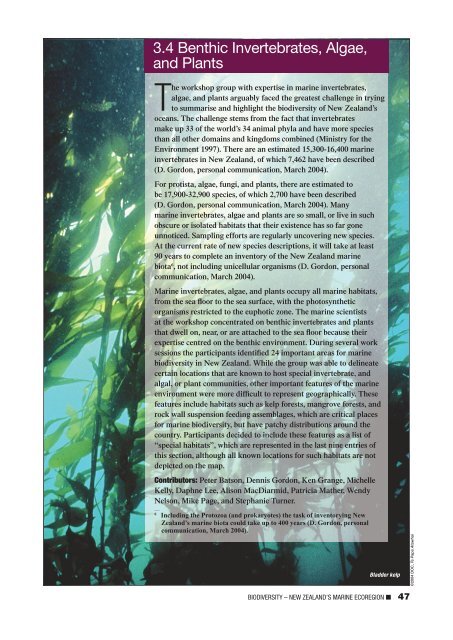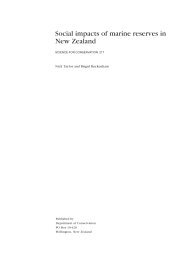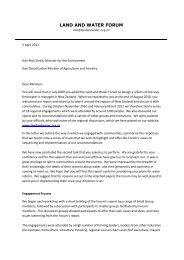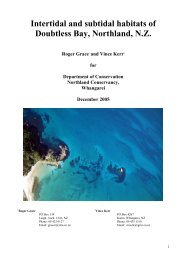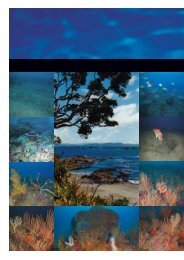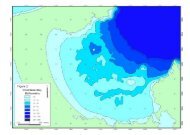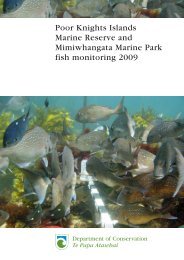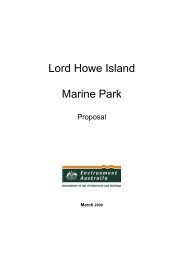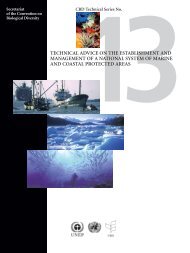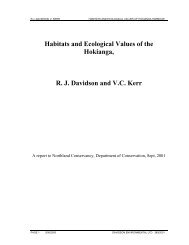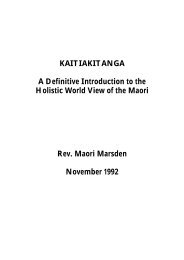WWF Shining a spotlight on the biodiversity of ... - MarineNZ.org.nz
WWF Shining a spotlight on the biodiversity of ... - MarineNZ.org.nz
WWF Shining a spotlight on the biodiversity of ... - MarineNZ.org.nz
You also want an ePaper? Increase the reach of your titles
YUMPU automatically turns print PDFs into web optimized ePapers that Google loves.
3.4 Benthic Invertebrates, Algae,<br />
and Plants<br />
The workshop group with expertise in marine invertebrates,<br />
algae, and plants arguably faced <strong>the</strong> greatest challenge in trying<br />
to summarise and highlight <strong>the</strong> <strong>biodiversity</strong> <strong>of</strong> New Zealand’s<br />
oceans. The challenge stems from <strong>the</strong> fact that invertebrates<br />
make up 33 <strong>of</strong> <strong>the</strong> world’s 34 animal phyla and have more species<br />
than all o<strong>the</strong>r domains and kingdoms combined (Ministry for <strong>the</strong><br />
Envir<strong>on</strong>ment 1997). There are an estimated 15,300-16,400 marine<br />
invertebrates in New Zealand, <strong>of</strong> which 7,462 have been described<br />
(D. Gord<strong>on</strong>, pers<strong>on</strong>al communicati<strong>on</strong>, March 2004).<br />
For protista, algae, fungi, and plants, <strong>the</strong>re are estimated to<br />
be 17,900-32,900 species, <strong>of</strong> which 2,700 have been described<br />
(D. Gord<strong>on</strong>, pers<strong>on</strong>al communicati<strong>on</strong>, March 2004). Many<br />
marine invertebrates, algae and plants are so small, or live in such<br />
obscure or isolated habitats that <strong>the</strong>ir existence has so far g<strong>on</strong>e<br />
unnoticed. Sampling efforts are regularly uncovering new species.<br />
At <strong>the</strong> current rate <strong>of</strong> new species descripti<strong>on</strong>s, it will take at least<br />
90 years to complete an inventory <strong>of</strong> <strong>the</strong> New Zealand marine<br />
biota 6 , not including unicellular <strong>org</strong>anisms (D. Gord<strong>on</strong>, pers<strong>on</strong>al<br />
communicati<strong>on</strong>, March 2004).<br />
Marine invertebrates, algae, and plants occupy all marine habitats,<br />
from <strong>the</strong> sea floor to <strong>the</strong> sea surface, with <strong>the</strong> photosyn<strong>the</strong>tic<br />
<strong>org</strong>anisms restricted to <strong>the</strong> euphotic z<strong>on</strong>e. The marine scientists<br />
at <strong>the</strong> workshop c<strong>on</strong>centrated <strong>on</strong> benthic invertebrates and plants<br />
that dwell <strong>on</strong>, near, or are attached to <strong>the</strong> sea floor because <strong>the</strong>ir<br />
expertise centred <strong>on</strong> <strong>the</strong> benthic envir<strong>on</strong>ment. During several work<br />
sessi<strong>on</strong>s <strong>the</strong> participants identified 24 important areas for marine<br />
<strong>biodiversity</strong> in New Zealand. While <strong>the</strong> group was able to delineate<br />
certain locati<strong>on</strong>s that are known to host special invertebrate, and<br />
algal, or plant communities, o<strong>the</strong>r important features <strong>of</strong> <strong>the</strong> marine<br />
envir<strong>on</strong>ment were more difficult to represent geographically. These<br />
features include habitats such as kelp forests, mangrove forests, and<br />
rock wall suspensi<strong>on</strong> feeding assemblages, which are critical places<br />
for marine <strong>biodiversity</strong>, but have patchy distributi<strong>on</strong>s around <strong>the</strong><br />
country. Participants decided to include <strong>the</strong>se features as a list <strong>of</strong><br />
“special habitats”, which are represented in <strong>the</strong> last nine entries <strong>of</strong><br />
this secti<strong>on</strong>, although all known locati<strong>on</strong>s for such habitats are not<br />
depicted <strong>on</strong> <strong>the</strong> map.<br />
C<strong>on</strong>tributors: Peter Bats<strong>on</strong>, Dennis Gord<strong>on</strong>, Ken Grange, Michelle<br />
Kelly, Daphne Lee, Alis<strong>on</strong> MacDiarmid, Patricia Ma<strong>the</strong>r, Wendy<br />
Nels<strong>on</strong>, Mike Page, and Stephanie Turner.<br />
6<br />
Including <strong>the</strong> Protozoa (and prokaryotes) <strong>the</strong> task <strong>of</strong> inventorying New<br />
Zealand’s marine biota could take up to 400 years (D. Gord<strong>on</strong>, pers<strong>on</strong>al<br />
communicati<strong>on</strong>, March 2004).<br />
Bladder kelp<br />
©2004 DOC, Te Papa Atawhai<br />
BIODIVERSITY – NEW ZEALAND’S MARINE ECOREGION ■ 47


